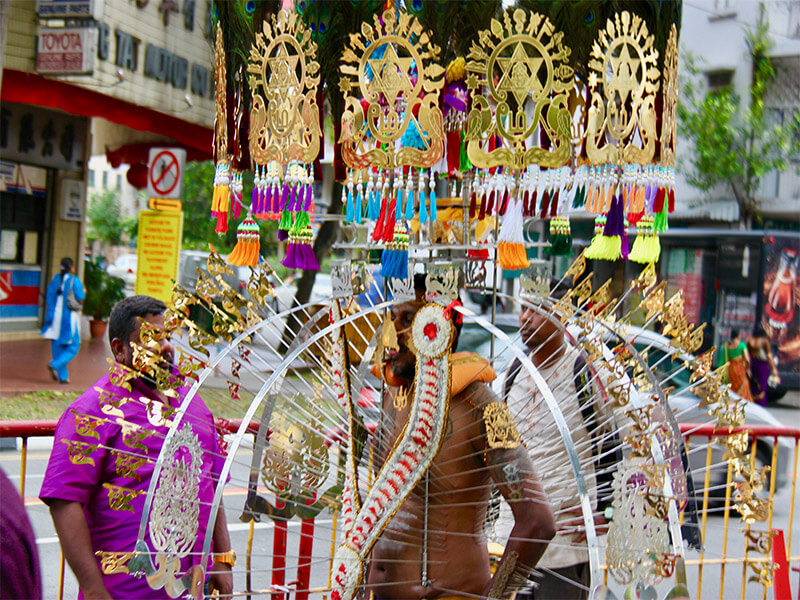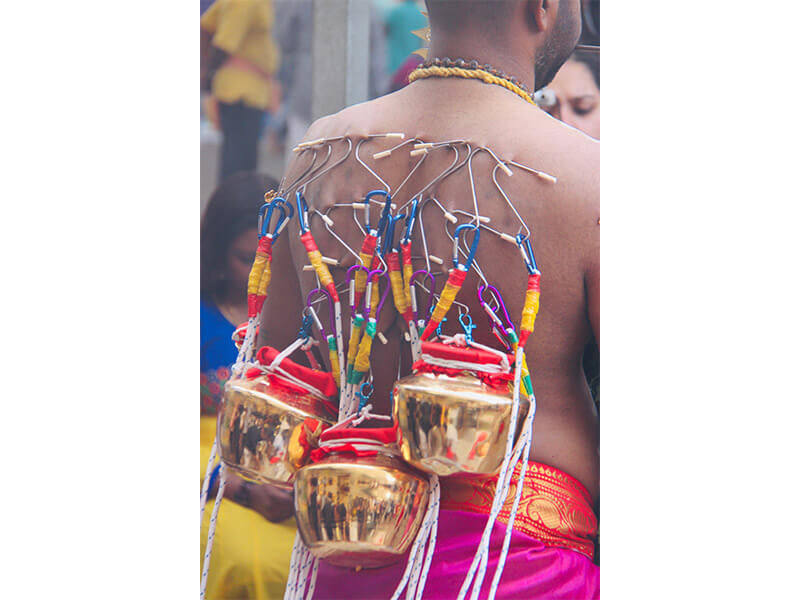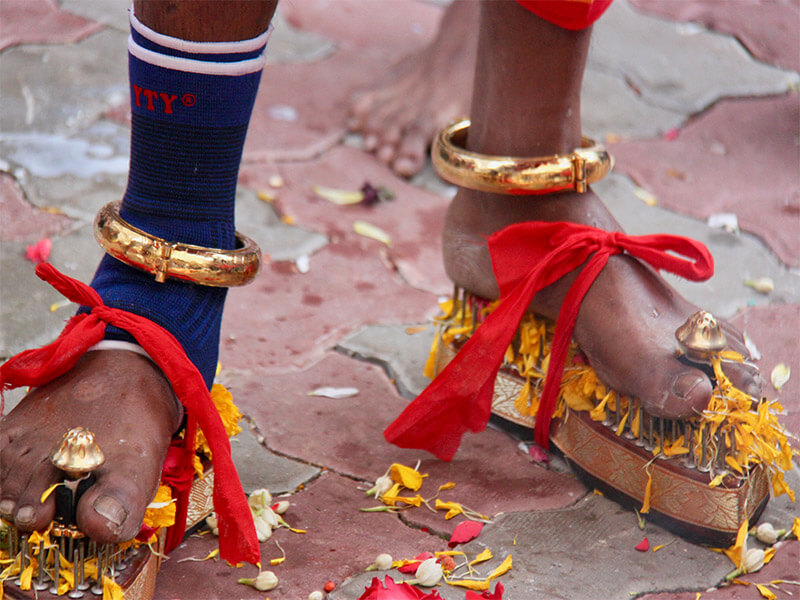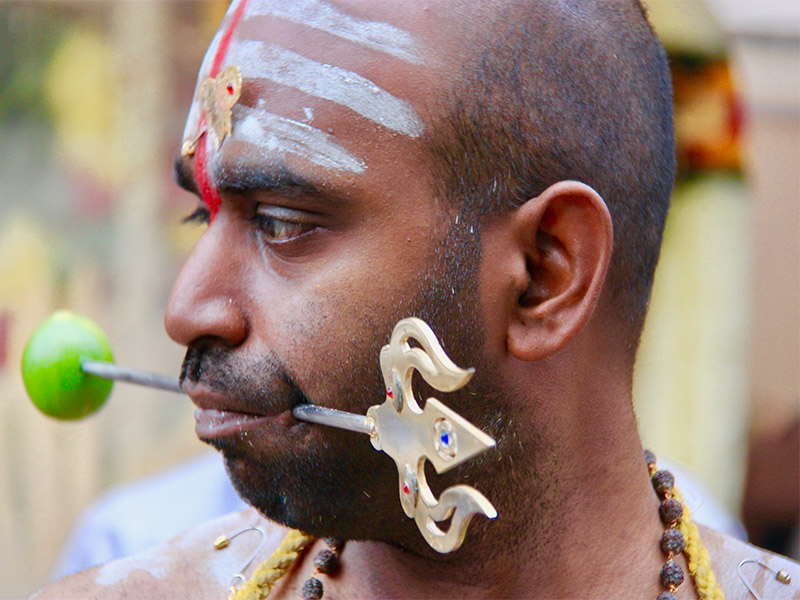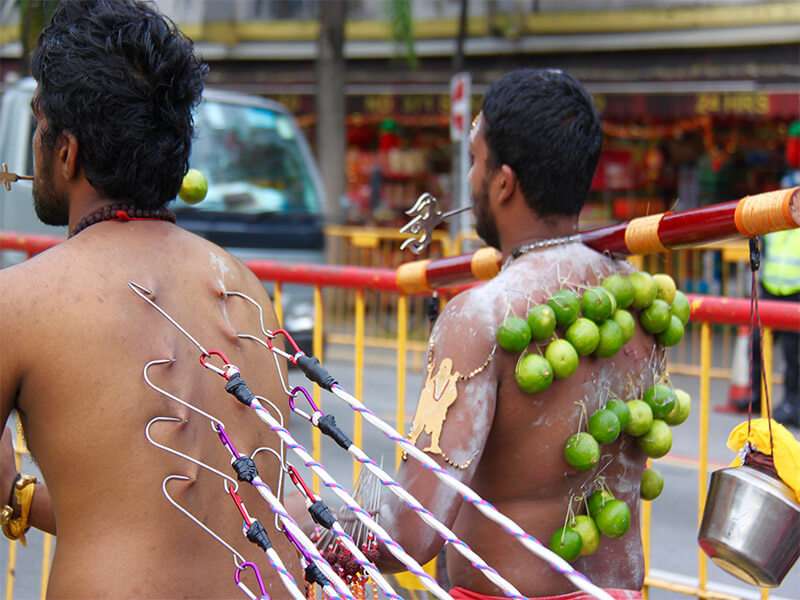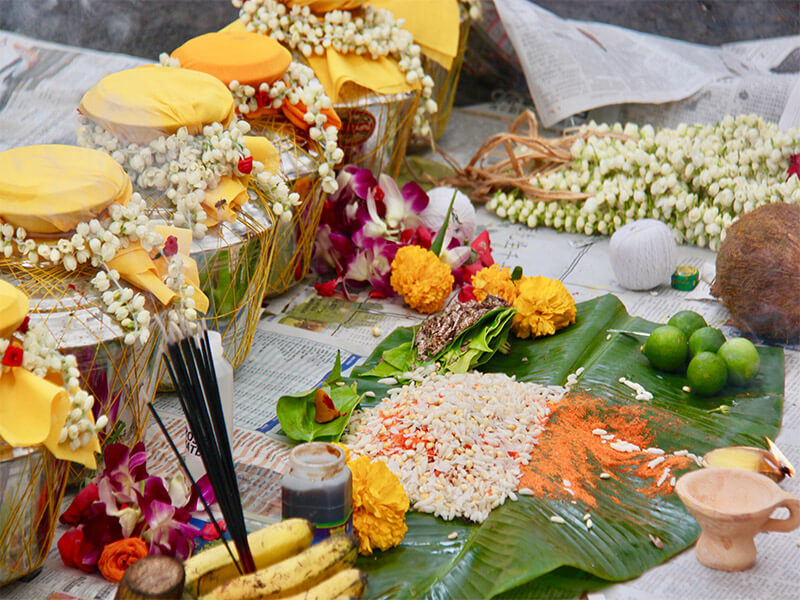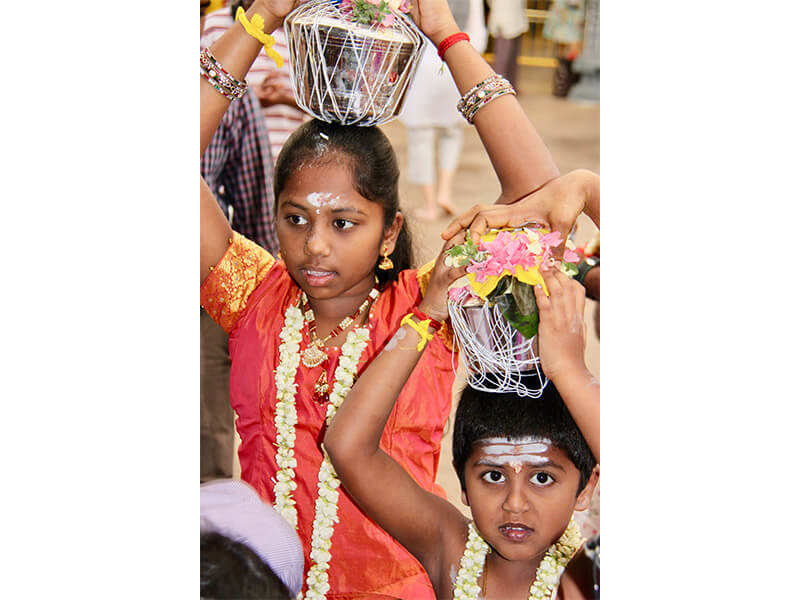Early morning prayers. Piercings. Pots of milk. A long procession. To those who aren’t familiar with the Hindu ritual of Thaipusam, it may seem a strange mix. It is, however, one of the more beautiful and spiritual religious rituals celebrated in Singapore – a festival steeped in ancient tradition. Thaipusam this year will be celebrated on 25 January.
About Thaipusam
The two-day event is a thanksgiving festival celebrated by the Tamil people that involves asceticism and control over one’s senses. It’s held to honour Lord Murugan, the Hindu god of war who represents virtue, youth and power – a deity revered for defeating a particularly nasty demon. Devotees seek blessings, fulfil vows and give thanks.
The chariot procession
The first day of Thaipusam, also known as the eve, sees a chariot procession starting from Tank Road at Sri Thendayuthapani Temple, a temple dedicated to Lord Murugan himself with 48 intricately etched glass panels angled to catch the light. The chariot takes Lord Murugan for a day’s visit to his brother Lord Vinayagar at Layan Sithi Vinayagar Temple on Keong Saik Road. Along the route, he stops at several places, including Sri Mariamman temple on South Bridge Road (Singapore’s oldest Hindu temple, dating back to 1827). Here, he greets the goddess within, a manifestation of his mother. He then continues on to see his brother.
The big day
Thaipusam starts in the wee hours, just after midnight with prayers in Little India. This is in preparation for a 4.5-kilometre colourful procession through Singapore. The route goes from Sri Srinivasa Perumal Temple on Serangoon Road in Little India to Sri Thendayuthapani Temple on Tank Road, near Fort Canning.
The procession is actually the culmination of a 48-day period of preparation by devotees who have followed a strict vegetarian diet and spiritual preparation, including celibacy.
After prayers, which include a head-shaving ritual, the first devotees bring pots of milk, carried on their heads by worshippers including women and children. The milk symbolises fertility and abundance. It’s poured over the statue of Lord Murugan at Sri Thendayuthapani as an act of offering and worship.
The kavadi
The most devoted walk on shoes made of spikes or are pierced with large skewers or hooks, through their chest, back or even tongue, which prevents them from speaking and gives them great powers of endurance. These piercings often secure kavadi, the large, ornate wooden and metal structures that are carried the length of the procession. The tradition of the kavadi goes back to an ancient Puranic legend involving Lord Murugan and two hills carried by a worshipper. The deity said that those who carry an object similar to the two hills suspended by a load-bearing pole would be blessed with their heart’s desire.
The word kavadi means “sacrifice at every step” in Tamil and, indeed, walking with a kavadi – which can way up to 40kg and reach up to four metres in height – is an incredible feat. The steel and wooden frame is generally a semi-circle that is attached with spikes, often decorated with peacock feathers or fruit. There are bars for support on the shoulders, but much of the weight is born by the piercings. There are simpler structures, but the more ornate ones can take hours to prepare. It’s considered a great honour to carry the kavadi for your family.
The vel
But why? Why does somebody need to be pierced? Doesn’t it hurt? Well, supposedly not. The Hindu believe that when the mind is free of material worth and the body free from physical pleasures, the devotee can undertake the sacred task without any pain. Amazingly, when you see those who are pierced, there is very little – if any – blood. The spikes represent the vel of Murugan, his spear, a mystic divine weapon given to him by his mother.
Observing
The Hindu ritual of Thaipusam is celebrated in the Caribbean, India, Sri Lanka, South Africa, Thailand, Guadeloupe and a few other countries and regions. The largest celebration is at the Batu Caves just outside of Kuala Lumpur. In some years, more than a million people attend.
Singapore has one of the larger Thaipusam celebrations in the world and onlookers are welcome. Hindus are very proud of their tradition and happy to share it with people who are curious – as long as you are respectful, you’re welcome to bear witness. In fact, a few expat onlookers even tell stories about Hindu families welcoming them to celebrate the full day of festivities with them.
Some of the lanes along the route between the two temples are closed to traffic. You can also go into the temples themselves to watch the preparations. Be sure to go barefoot and dress respectfully, covering your shoulders and knees. While it’s a beautiful festival, it can also be a bit overwhelming for small children who don’t understand what’s happening. Consider carefully taking young kids. It can be very crowded and hot, so carry very little, drink lots of water and bring a good camera. Most of all, enjoy! This is a slice of life you probably don’t get back home.
Fact File
Locations
Sri Srinivasa Perumal Temple, 397 Serangoon Road
Sri Thendayuthapani Temple, 15 Tank Road
More information
visitsingapore.com
singaporetravelhub.com/events/thaipusam
Enjoyed reading about the Hindu ritual of Thaipusam? For more helpful tips, head to our Living in Singapore section.
Chinese New Year: Things to do (and not do!)
How to choose between an international or local school
Don't miss out on the latest events, news and
competitions by signing up to our newsletter!
By signing up, you'll receive our weekly newsletter and offers which you can update or unsubscribe to anytime.

